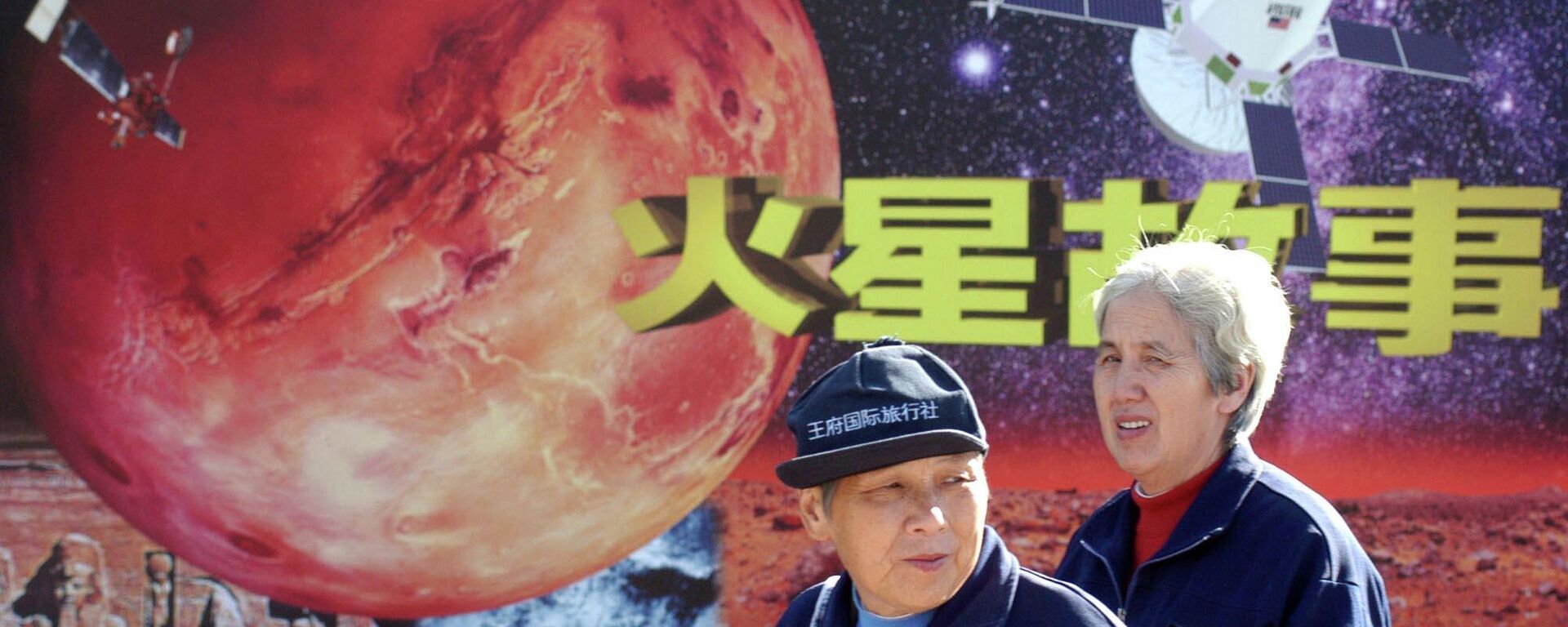https://sputnikglobe.com/20220617/scientists-question-existing-theories-on-mars-origins-amid-new-finding-in-200-year-old-meteorite--1096419375.html
Scientists Question Existing Theories on Mars' Origins Amid New Finding in 200-Year-Old Meteorite
Scientists Question Existing Theories on Mars' Origins Amid New Finding in 200-Year-Old Meteorite
Sputnik International
A piece of rock from the Red Planet landed on Earth over two centuries ago, and thanks to its unique composition, it made possible a new discovery that could... 17.06.2022, Sputnik International
2022-06-17T21:49+0000
2022-06-17T21:49+0000
2023-04-12T16:58+0000
science & tech
mars
space
https://cdn1.img.sputnikglobe.com/img/07e6/05/0e/1095501712_684:0:3267:1453_1920x0_80_0_0_8155e197d1ca88646a3c40f52fc6b71b.jpg
A recent analysis of the composition of the Chassingy meteorite, which originated from Mars and hit our planet in 1815, revealed that the Red Planet possibly formed its core from different materials than originally thought.Scientists previously believed that the core of Mars was formed by the gases of the young Solar System's nebula, with meteorites bringing in additional volatile elements later. This assumption was based on an earlier examination of the meteorite, which revealed the presence of xenon – an inert gas common to nebulas. However, a new study led by the University of California took a fresh look at the two-centuries-old piece of rock:The new finding suggests that the planet's core might have been formed mostly as the result of meteorite collisions. At the same time, the planet's atmosphere was largely made of gases from the solar nebula, whilst previously scientists believed that these gases were pushed out of the nebula-formed core.The new model also suggests that Mars acquired its first atmosphere after cooling off instead of creating it at the stage when it was a molten piece of rock. The new research, however, has raised new questions: if Mars' atmosphere was created out of nebula, why wasn't it blown off like the nebula itself due to solar radiation? This question remains to be answered if the findings of the scientists from the University of California stand confirmed after peer review of their work.Let's stay in touch no matter what! Follow our Telegram channel to get all the latest news: https://t.me/sputniknewsus
https://sputnikglobe.com/20220607/china-finalising-first-space-station-amid-plans-for-manned-flights-to-moon--mars-1096095843.html
mars
Sputnik International
feedback@sputniknews.com
+74956456601
MIA „Rosiya Segodnya“
2022
Tim Korso
https://cdn1.img.sputnikglobe.com/img/07e6/03/0d/1093831826_0:0:216:216_100x100_80_0_0_e3f43a960af0c6c99f7eb8ccbf5f812c.jpg
Tim Korso
https://cdn1.img.sputnikglobe.com/img/07e6/03/0d/1093831826_0:0:216:216_100x100_80_0_0_e3f43a960af0c6c99f7eb8ccbf5f812c.jpg
News
en_EN
Sputnik International
feedback@sputniknews.com
+74956456601
MIA „Rosiya Segodnya“
Sputnik International
feedback@sputniknews.com
+74956456601
MIA „Rosiya Segodnya“
Tim Korso
https://cdn1.img.sputnikglobe.com/img/07e6/03/0d/1093831826_0:0:216:216_100x100_80_0_0_e3f43a960af0c6c99f7eb8ccbf5f812c.jpg
science & tech, mars, space
science & tech, mars, space
Scientists Question Existing Theories on Mars' Origins Amid New Finding in 200-Year-Old Meteorite
21:49 GMT 17.06.2022 (Updated: 16:58 GMT 12.04.2023) A piece of rock from the Red Planet landed on Earth over two centuries ago, and thanks to its unique composition, it made possible a new discovery that could change astronomers' views regarding the early days of Mars.
A recent analysis of the composition of the Chassingy meteorite, which originated from Mars and hit our planet in 1815, revealed that the Red Planet possibly formed its core from different materials than originally thought.
Scientists previously believed that the core of Mars
was formed by the gases of the young Solar System's nebula, with meteorites bringing in additional volatile elements later. This assumption was based on an earlier examination of the meteorite, which revealed the presence of xenon – an inert gas common to nebulas. However, a new study led by the University of California took a fresh look at the two-centuries-old piece of rock:
"With xenon isotopes, it's difficult to distinguish the precise source of volatiles, but that's not the case with krypton. With krypton, you can better see the difference between potential sources like from solar or meteorites […] but krypton isotopes are more difficult to measure than xenon isotopes, "Sandrine Péron, one of the authors of the research, told the New Scientist.
The new finding suggests that the
planet's core might have been formed mostly as the result of meteorite collisions. At the same time, the planet's atmosphere was largely made of gases from the solar nebula, whilst previously scientists believed that these gases were pushed out of the nebula-formed core.
The new model also suggests that Mars acquired its first atmosphere after cooling off instead of creating it at the stage when it was a molten piece of rock. The new research, however, has raised new questions: if Mars' atmosphere was created out of nebula, why wasn't it blown off like the nebula itself due to solar radiation? This question remains to be answered if the findings of the scientists from the University of California stand confirmed after peer review of their work.
Let's stay in touch no matter what! Follow our Telegram channel to get all the latest news: https://t.me/sputniknewsus 




